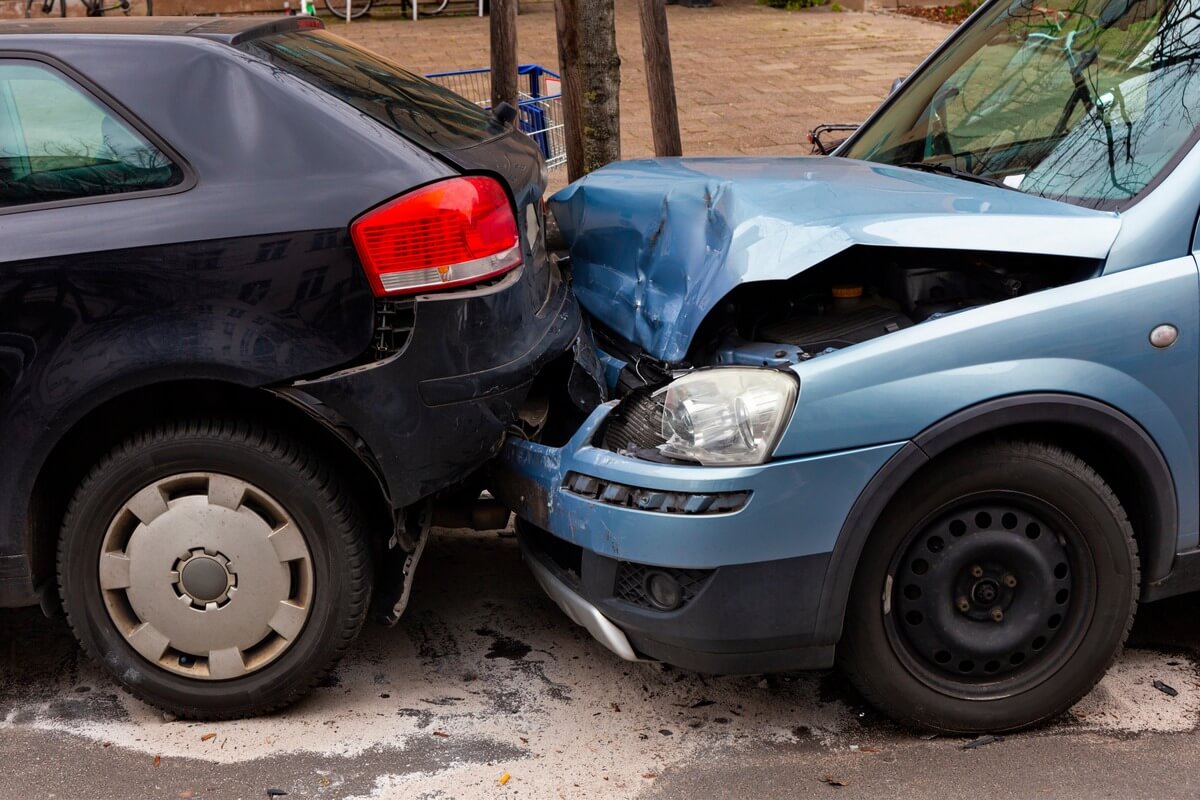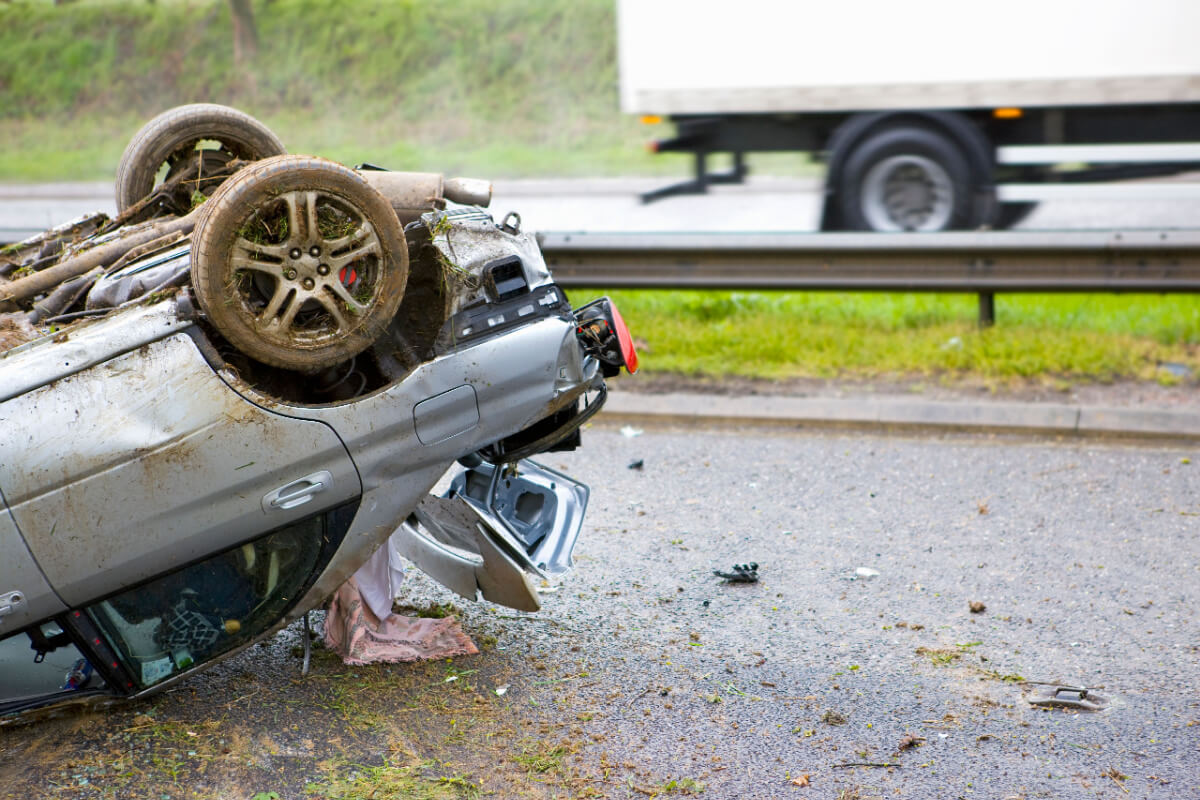
Rear-end collisions occur for a variety of reasons–most of them related to human error. Drivers who have become distracted behind the wheel may inadvertently tailgate another driver or fail to stop in time when the driver in front comes to an abrupt stop. Sometimes, drivers may even cause rear-end collisions because of aggressive driving behavior, including deliberately speeding or tailgating.
Regardless of the cause of the rear-end collision, however, they can cause serious injuries. In a rear-end collision, the passengers in the vehicle often find themselves snapped forward abruptly, then dragged back against their seats as their seatbelts catch them. As a result, they may have substantial injuries that may require long-term treatment.
Whiplash
The abrupt back-and-forth movement that the neck makes during a rear-end collision can quickly result in whiplash. Whiplash frequently causes considerable pain and limitations on the movements the injured party can complete. Sometimes, whiplash clears up on its own. Other times, however, whiplash can result in chronic symptoms that may cause long-term limitations for the victim.
Chest Injuries
Rear-end collisions frequently result in chest injuries, including broken bones in the chest or internal bleeding, as a result of the trauma that comes from hitting the steering wheel at a high rate of speed. Chest injuries can cause considerable pain and long-term limitations. In some cases, chest injuries can result in long-term health problems for the victim.
Seat Belt Syndrome
Seat belts help save lives in the case of serious collisions. However, seatbelts may also cause their own set of injuries as the force of the accident causes the seat belt to catch the driver at a high rate of speed. Seat belt syndrome encompasses a range of injuries, including injuries to the abdominal wall and internal organs. Prompt treatment of any signs of seat belt syndrome can prove critical to the victim’s overall recovery.
Herniated Discs
Herniated discs can cause considerable pain as the gel-like center of the discs in the spinal cord pushes out onto the nerves. Sometimes, herniated discs can also cause numbness and tingling, often localized to one side of the body. A herniated disc can cause considerable long-term limitations, especially if the victim suffers from severe pain.
Spinal Cord Injuries
Sometimes, a rear-end collision can result in spinal fractures, also known as spinal cord injuries. Spinal fractures occur when the spinal cord actually breaks. Frequently, spinal cord injuries result in a complete loss of mobility and function below the site of the injury. These injuries may continue to impact the victim for the rest of their lives. While complete spinal cord injuries do not heal and rarely result in considerable mobility gains, patients who suffer incomplete spinal cord injuries may regain some function as they heal.
Broken Bones
Sometimes, patients in rear-end collisions may suffer broken bones. Broken bones can occur anywhere on the body. However, drivers involved in a rear-end collision often suffer broken bones in the hands and arms, since they may brace themselves against the steering wheel at the time of impact. Broken bones not only cause serious immediate pain, they may result in considerable limitations to the victim’s usual daily activities. Broken bones can prevent many people from working while they heal. Furthermore, victims with broken bones may require surgery and considerable physical therapy in order to treat their injuries.
Facial Injuries
Rear-end collisions can cause the victims in the front vehicle to slam into the steering wheel or windshield, which may result in severe facial injuries. Blunt force trauma can cause broken bones in the face, while the glass from the windshield may lead to considerable cuts. Often, facial injuries result in a permanent change of appearance, which can lead to considerable emotional trauma. Even with plastic surgery, some people may not fully regain their former appearance after a car accident involving facial injuries. Often, facial scarring leads to long-term trauma.
Brain Injuries
Any type of car accident can quickly result in concussion or brain injury. Sometimes, the victim may slam forward, hitting his head against the steering wheel, the dashboard, or the back of the seat. Other times, especially at high speeds, the force of a rear-end collision can offer enough trauma to cause a brain injury as the brain hits the inside of the skull. Brain injuries can interfere with every area of a victim’s life, from making it difficult for the victim to concentrate on tasks at work to making it impossible for him to keep his attention on his usual leisure activities. Some people experience symptoms of even minor traumatic brain injury more than a year after the initial accident.
Airbag Injuries
When an airbag deploys during a collision, it aims to help protect the victims in the vehicle. Unfortunately, airbags can cause injury just as severe as hitting the steering wheel, in some cases, especially in shorter people who sit close to the steering wheel. Airbags have caused broken noses, severe bruising, and even head trauma, depending on the force with which they deploy at the time of the incident.
What Should You Do After a Rear-End Collision?
If you suffer injuries in a rear-end collision, make medical attention your top priority. When it comes to injuries like whiplash and even broken bones, you may not notice the symptoms immediately–but they can cause severe impact later, leaving you in considerable pain. Always make sure that you see a doctor immediately after an accident to create evidence of when your injuries occurred, which can make it easier for you to later pursue compensation. Make sure that you report the accident, too: the police can help issue a report that will establish when the incident took place and what led to the accident.
Car accidents can happen in various situations, from railroad crossing injuries to train accidents, and even common incidents like rear-end collisions. It’s essential to be prepared for all possibilities, including checking your insurance before a storm or understanding your rights in the case of a class action. Each of these situations can have significant legal implications, and being informed and prepared can make all the difference in the outcome of your case.
Finally, get in touch with a lawyer to learn more about your right to compensation. A lawyer can help guide you through a personal injury claim and help you get the compensation you may deserve. Do you have questions about your rear-end collision injuries? Contact Alvendia Kelly & Demarest today at 504-200-0000 to schedule a free consultation.
Categories
- Bicycle Accidents
- Car Accident
- Case results
- Class Action
- Community Aid
- COVID-19
- Fun
- General
- Hard Rock Lawsuits
- Holiday
- Insurance Claims
- Legal Advice
- Mardi Gras Accident Attorney
- Mass Tort
- Medical
- Motorcycle Accident
- Personal Injury
- Practices
- Premise Liability
- Recent News
- Safety
- Truck Accidents
- Uncategorized
- Weather
- Work-Related Accident

In 2003, after being dissatisfied with the quality of legal care for victims of car accidents, Roderick ‘Rico’ Alvendia sought to establish a new firm focused on providing high-quality legal services to aid injured victims and their families. J. Bart Kelly, sharing Rico’s passion for upholding justice, joined the firm later that year, and established a partnership.






